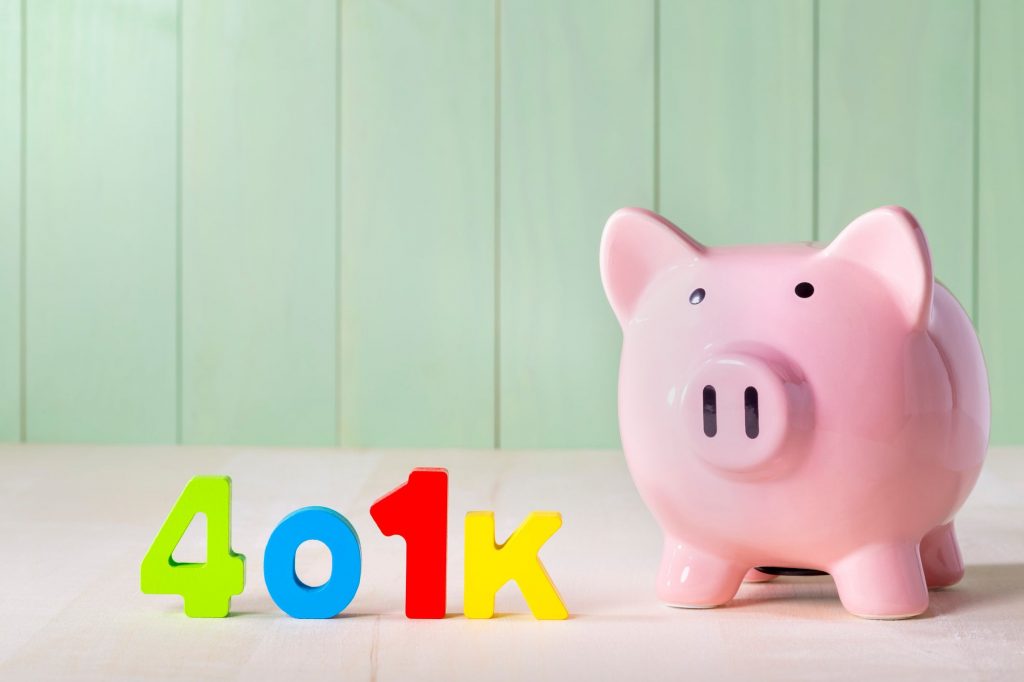
Do you have access to a 401(k) at work? If so, participating in this type of plan can provide you with many benefits like growth from stock market appreciation and tax deferral on your contributions.
If your company has a match program, it could even help you save more for retirement using less of your own money. Here’s how.
How it works
A 401(k) company match program works by giving you a percentage of your income up to a maximum amount. The table below shows some examples of how much money your company could contribute to your 401(k) given a certain salary and match rate.
| Salary | Percentage match | Dollar amount |
|---|---|---|
| $50,000 | 5% | $2,500 |
| $75,000 | 3% | $2,250 |
| $100,000 | 4% | $4,000 |
Over time these contributions could have a huge impact on your overall savings. You can see below how money that is invested from a match program could grow over 30 years at different rates of return. Historically you could’ve earned 10% on average if you held a portfolio made up of 100% stock, 8% with a mix of 40% stocks and 60% bonds, and 9% with 60% stocks and 40% bonds.
| Company Contribution | 8% | 9% | 10% |
|---|---|---|---|
| $2,500 | $305,865 | $371,438 | $452,359 |
| $2,250 | $275,278 | $334,294 | $407,123 |
| $4,000 | $489,383 | $594,301 | $723,774 |
The catches
A match program can be an excellent way of helping you save more, but there are some important things you should know. You can usually only receive this match if you make an equal contribution. So if you make $50,000 and have a 5% match but only contribute $2,000 to your 401(k), your company will only match that amount, not the full 5% or $2,500.
The money that your employer matches isn’t usually yours right away. Most companies have a vesting schedule that determines when you can walk away with the money free and clear. And a certain percentage of your match will vest annually for a pre-determined number of years. For example, if you have a five-year vesting period, 20% of your match will vest each year and you will fully own $1,000 each year from a $5,000 match. If you leave the company after two years you can only keep $2,000 of the $5,000 match.
Keep market risk in mind
Money earned from a match program is subject to the same amount of investment risk as any other security that you own. This is why you should invest your and your employer’s contributions with your risk tolerances in mind.
Holding more aggressive investments like stocks can grow your retirement accounts more over the long term but you can also lose more money if a stock market crash happens. And in a year like 2008, if your combined contributions and 401(k) matches had grown to $1 million, you would’ve seen your balance drop to $630,000 by the end of the year if you invested 100% in large-cap stocks. This type of a decrease in portfolio amount could’ve resulted in you delaying retirement.
There are some simple ways that you can determine an appropriate asset allocation mix, like the 100 rule where you subtract your age from 100 and the number you get is the percentage of stocks you should hold. But taking a quiz that looks at parameters like how long you have until you use your money and your feelings about volatility may be a better gauge.
Saving for retirement can be hard — especially if you don’t have much disposable income. But there are tools at your disposal that can make it easier. And using a 401(k) company match program and the free money that it provides can help you accumulate wealth without making huge annual contributions.





























